AC TIG welding is a versatile and precise welding technique that uses alternating current to produce a high-quality weld.
Unlike DC TIG welding, AC TIG welding is ideal for welding aluminum and other non-ferrous metals, as it provides a cleaning action that removes oxidation and other contaminants from the weld area.
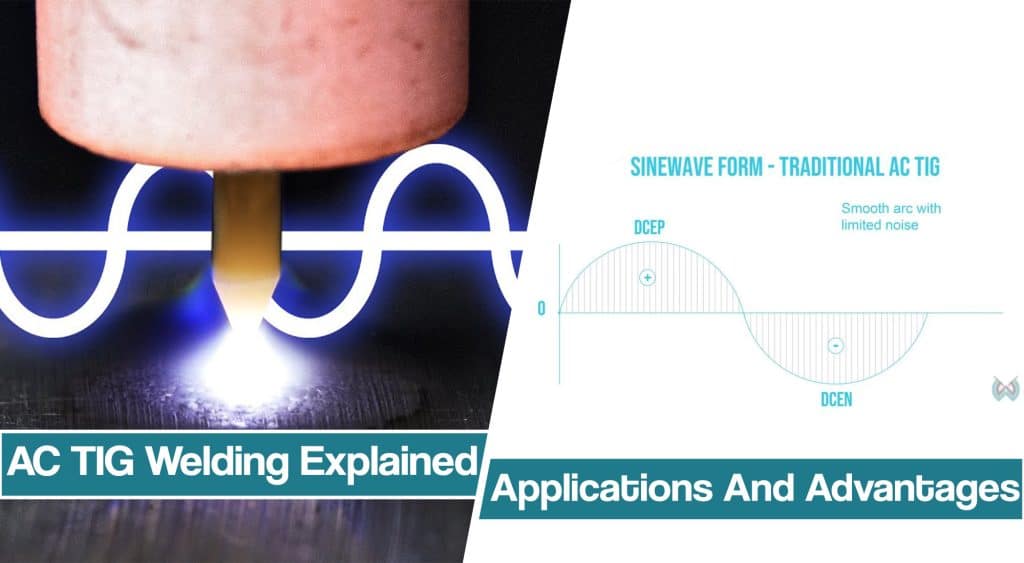
However, mastering the technique can take time and practice. In this article, we will take you through the basics of AC TIG welding, explaining its benefits, applications, the good and the bad.
What Is AC TIG Welding, And When Is It Used?
Alternating current (AC) TIG welding is a specialized welding process used to join a wide range of metals and alloys. It uses a non-consumable tungsten electrode to create an arc between the workpiece and the filler material, which melts and then cools, forming a strong weld joint.
AC welding is preferred for its flexibility in controlling the weld’s temperature and for its ability to remove oxide layers from the workpiece surface.
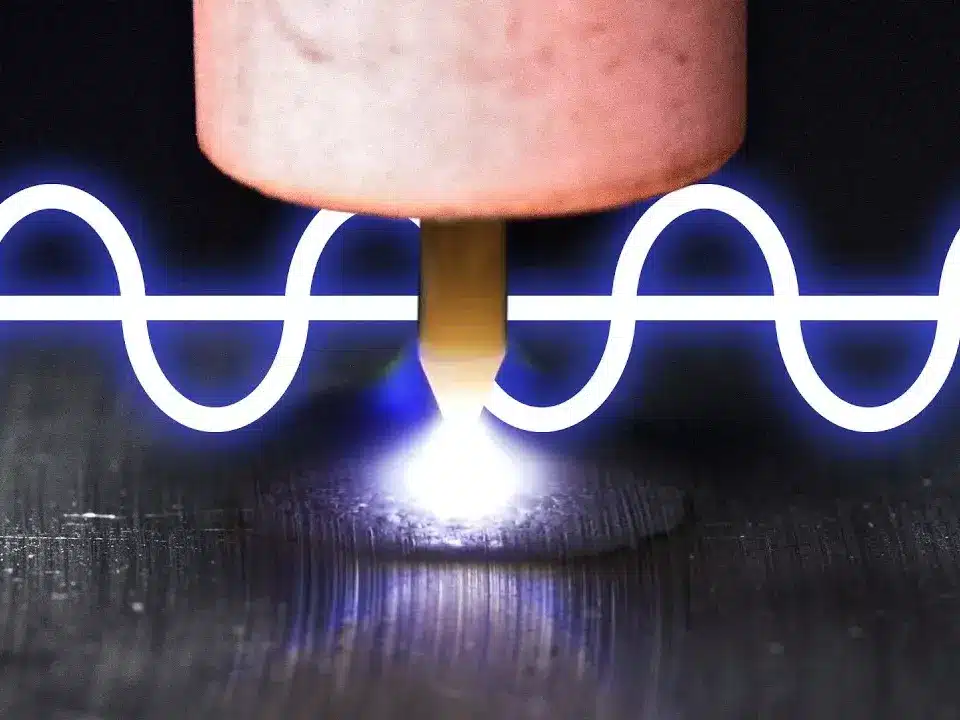
The AC TIG welding process uses an alternating current, or AC, as opposed to the direct current (DC) used in other types of welding, such as MIG welding or Stick welding. The alternating welding current causes the weld arc to switch polarity at regular intervals, also known as frequency, which helps cleanse the weld area by blowing away any oxide layers present on the surface. This also helps increase the penetration of the weld by allowing heat to be concentrated at the edges of the workpiece.
AC TIG welding can be used for both light-duty and heavy-duty applications such as automotive repair or fabrication, aerospace engineering, appliance manufacturing, and pipe fitting. AC TIG welding is ideal for thin materials that need a consistent heat input, such as aluminum and magnesium alloys.
In these applications, it results in better penetration and a higher quality weld than with DC TIG welding. Additionally, AC TIG welding excels at removing aluminum oxide layer or other oxides from surfaces due to its high cleaning capabilities compared to DC welding, which is essential when TIG welding aluminum.
Differences Between AC and DC TIG Welding
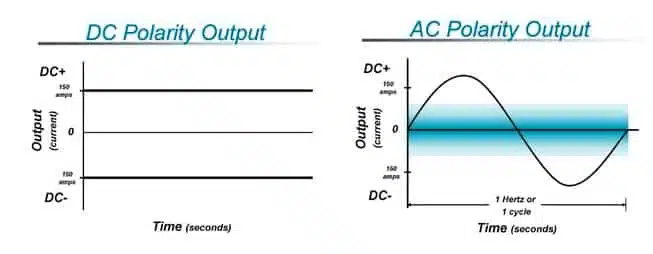
The main difference between AC and DC is the direction of the current flow. In an alternating current (AC) circuit, the current flow switches directions regularly, while in a direct current (DC) circuit, the current flows in one direction.
When using an AC power source for TIG welding, the arc is created by switching between positive and negative currents. The frequency of an AC current is measured in hertz (Hz). In the United States, the standard frequency of AC current is 60 Hz, meaning it changes direction 120 times a second.
This allows for better control of the weld puddle and helps to reduce spatter during the welding process. Additionally, when working with AC power sources, the electrode polarity can be changed from positive to negative or vice versa as needed to create a more stable arc when welding the thin sheet metal.
When using a DC output for TIG welding, there are two types of polarity available: DC+ (DCEP) and DC- (DCEN). In a Direct Current Electrode Positive setup, the electrode is connected to the positive side of the power source, while in a Direct Current Electrode Negative setup, it is connected to the negative side.
With a DC- setup, more heat is concentrated on the workpiece due to its increased electrical resistance. This results in faster weld speeds and deeper weld penetration into thicker metals. On the other hand, a DC+ setup produces less heat at the point of contact and is better suited for thinner materials where too much heat can cause warping or discoloration. In addition, DCEP in TIG welding removes surface oxides, but arc blow issues can occur.
AC Sinewave Form
The AC sinewave is a type of alternating current waveform that is widely used for TIG welding. This type of waveform is characterized by a repeating pattern of gradually increasing and decreasing current over time, which results in the production of a sinusoidal oscillating voltage and current. The AC produced by this waveform is generated by many of the older style TIG welders, while today, the waveform can be shaped
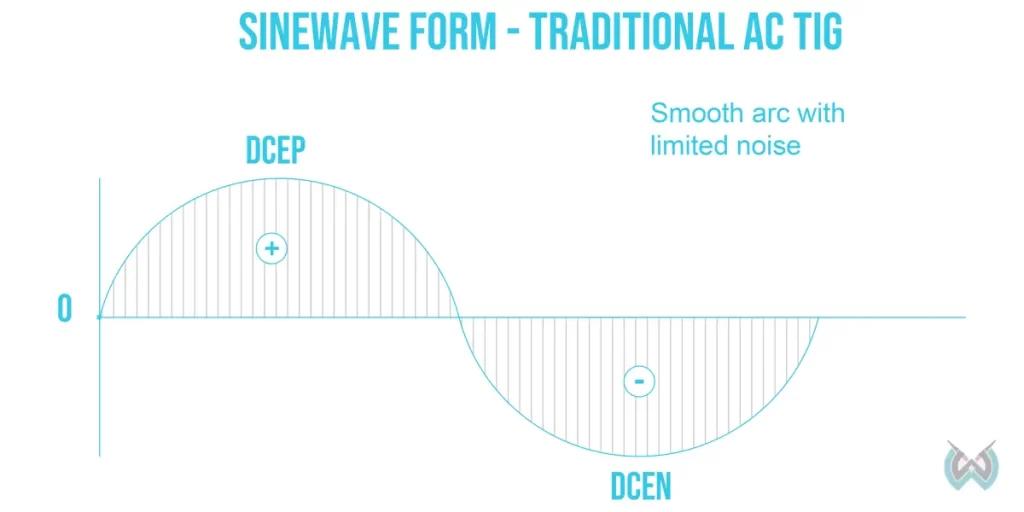
The AC sinewave type of waveform looks like a smooth line that rises and falls in amplitude as it cycles. The cycle begins at zero volts and increases to peak amperage before decreasing back to zero, then reversing direction and increasing to peak amperage again before returning to zero once more. This cycle continues indefinitely, with the frequency typically ranging between 20 Hz to 500 Hz, depending on the specific needs of the application.
AC Squareweave Form
AC squarewave waveform alternates the current between positive and negative values, with the current ramping up to its maximum peak value before suddenly dropping to its minimum value and then starting to ramp up again in the opposite direction. The rate at which this transition occurs is referred to as “frequency”, and typically AC squarewave welders use frequencies between 20–200 Hz.
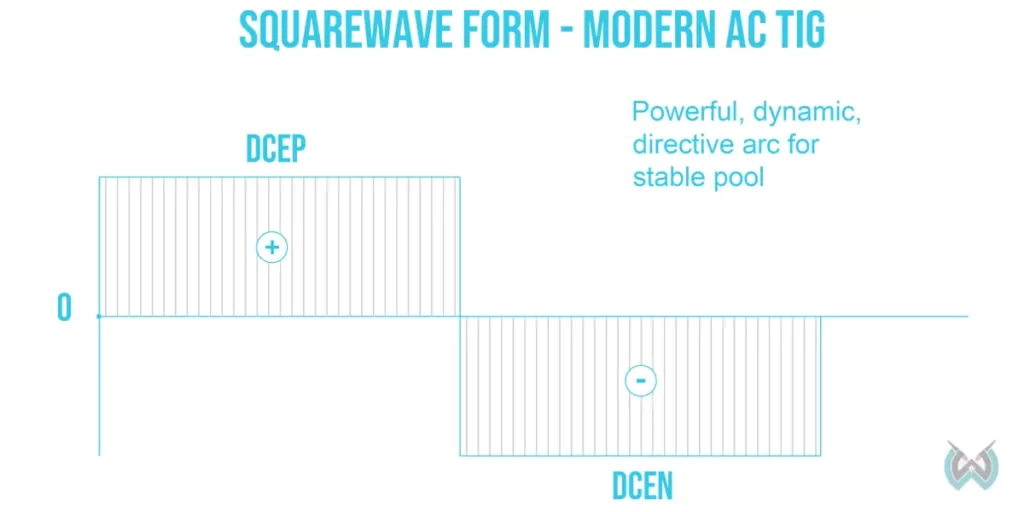
The shape of an AC squarewave current waveform resembles a square, hence the name. During the transition from positive to negative, the current decreases quickly and is known as the “fall time”; similarly, during the transition from negative to positive, the current increases quickly and is known as the “rise time”. These times are usually very short – often less than 1 millisecond – but they have a large impact on how well the weld penetrates and what type of metal oxide is produced.
As mentioned, AC squarewave welders typically operate at frequencies between 20–200 Hz. At lower frequencies (20–50 Hz), there is less arc stability; however, higher frequencies (50–200 Hz) allow for greater arc stability and better welding performance. Higher frequency TIG welder settings produce a smoother weld bead with less spatter and better penetration than lower frequency settings.
Additionally, higher frequency settings allow for better control over heat input into the workpiece, allowing for finer control over welding parameters such as travel speed, amperage, and voltage. The square wave AC cycle is usually found in the latest inverter technology AC/DC TIG welders.
AC Balance
The AC balance control allows a welder to adjust the ratio between the cleaning action and penetration of the weld.
The cleaning action is determined by the positive half-cycle of the alternating current, which causes a spark that helps remove contaminants from the base metal and provides a stable arc.
On the other hand, penetration is controlled by the negative half-cycle, which increases heat input into the weld pool and helps with fusion.
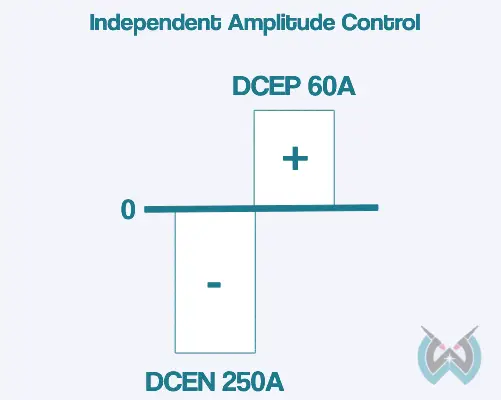
The AC balance knob adjusts how much of each half-cycle is used in relation to each other, with 0% being all positive cycles for maximum cleaning and 100% being all negative cycles for maximum penetration. For most applications, the ideal balance is between 20% and 80%.
Lower balances will increase cleaning action, and the effect on the arc is to provide a wider clean weld pool with shallow penetration. Meanwhile, higher balances will increase penetration, which results in higher fusion potential when welding at the same travel speed as the balanced condition.
AC/DC TIG Welders
If you are a hobbyist or occasional welder, more than 80%of your welding includes welding mild steel with the TIG welding process. In that case, you are more than fine with your DC TIG welder. DC equipment is cheaper, so it is a win/win situation. However, once your welding jobs start requiring you to weld aluminum, you will need to switch to AC TIG welders.
AC/DC welders can be separated into budget-friendly machines that usually include entry-level features such as frequency pulse, and they will be enough if you are not welding for critical applications.
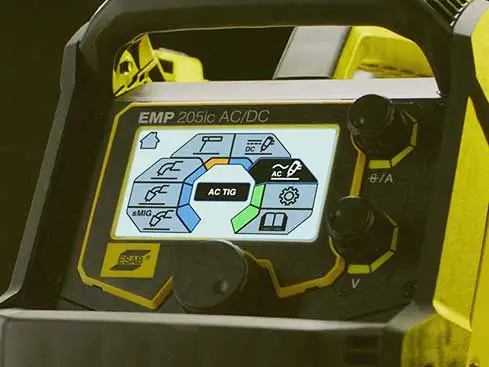
However, once there is a need for the highest weld quality, you will need a squarewave machine that allows you to control the shape of your waveform.
Regardless of the amount of features, AC/DC TIG welders are more expensive than DC-only TIG welders. Therefore, you should consider your needs and options before buying one, but if you are looking for versatility, you cannot go wrong with this kind of machine.
Advantages of AC TIG Welding
AC TIG welding offers many advantages over DC TIG and other welding processes such as Stick or MIG due to its efficiency, ability to deal with oxides on the surface of the workpiece and its suitability for joining difficult materials or dissimilar metals together while also producing fewer sparks than other processes.
AC TIG is better at dealing with oxides on the surface of the workpiece.
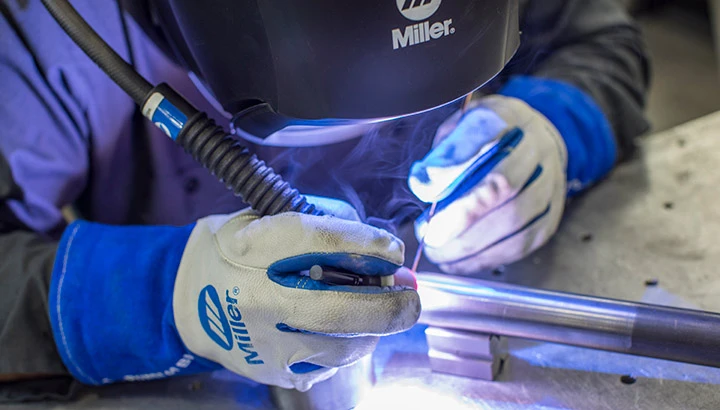
The alternating current helps to break down the oxides, which can then be easily removed by brushing them away during welding. This means that less post-weld cleaning is required.
Additionally, it can be used to weld materials that are difficult to join with other welding processes, such as aluminum alloys. Most welding jobs that include aluminum welding will require a softer arc which is better able to penetrate thick sections and reduce wrapping due to its lower heat input. TIG welding with AC produces fewer sparks than other processes, making it suitable for use in environments where sparks could cause a hazard or damage equipment.
Drawbacks of AC TIG Welding
One of the main drawbacks of AC TIG welding is that it is more difficult to control than DC TIG welding mild and stainless steel. AC TIG welding requires a higher level of skill and knowledge since it produces a more volatile arc which can be prone to wandering, leading to inconsistent welds. This can cause increased heat input which can lead to warping, porosity, and cracking in the welded material. In addition, AC current produces an unstable arc which can cause more spatter and slag build-up on the weld.
Additionally, AC TIG welding lacks penetration power compared to DC TIG welding. This can make it difficult to penetrate thicker materials as the arc tends to burn away too quickly. It also has limited power for heavy-duty welding applications such as structural steel or high alloy steel.
Conclusion
AC TIG welding is a versatile and precise welding technique that is ideal for welding aluminum and other non-ferrous metals. It requires a good understanding of the equipment, techniques, and settings to achieve a high-quality weld. However, with practice and the right equipment, anyone can master AC TIG welding and take their welding skills to the next level.
We hope our article helped you understand the differences between AC welding and DC welding, which can be crucial when selecting the right stuff for your next welding project. Once you get the hang of your welder and TIG welding settings, you can expect the best possible results, which are with TIG welding processes very rewarding.





